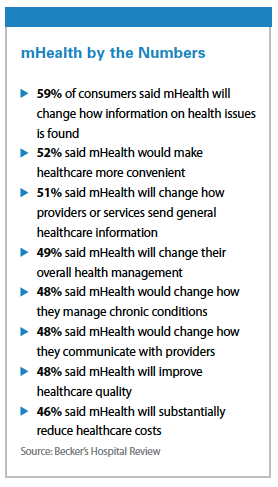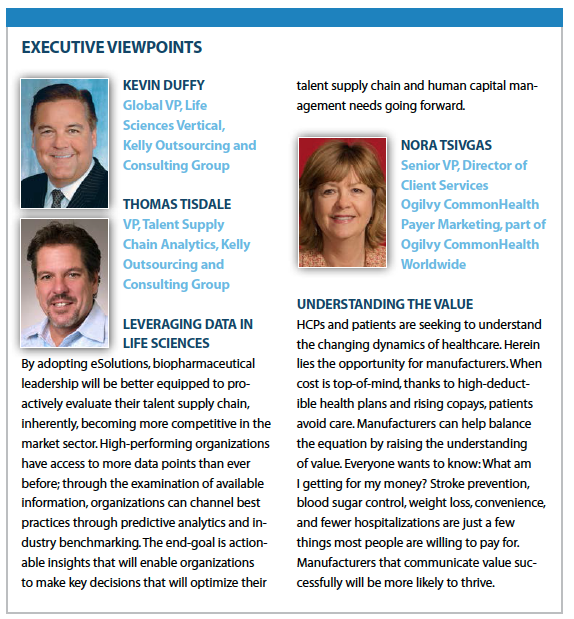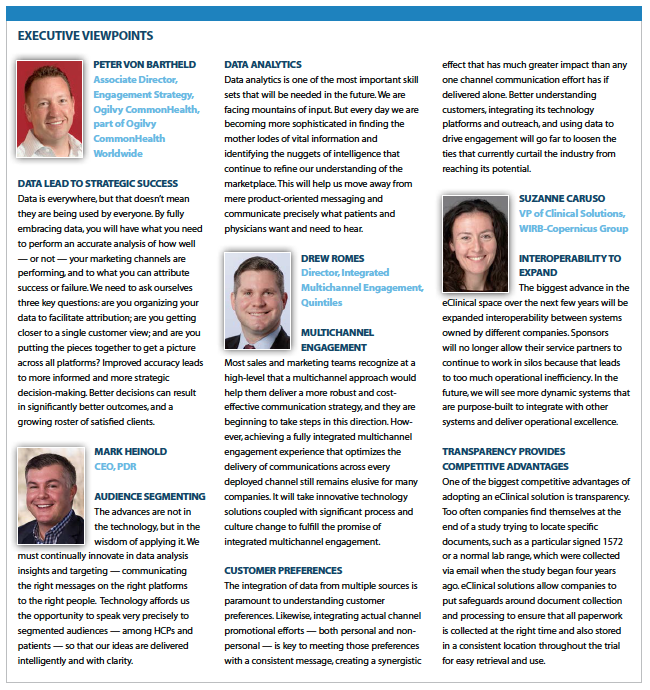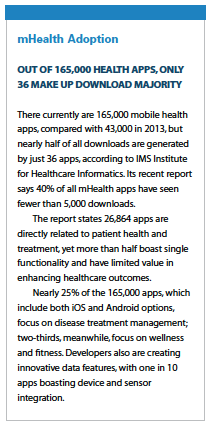As eSolutions, which encompass everything from mHealth to technologies that are making houses smarter, continue to improve the quality of life for patients and caregivers, they also making physicians’ lives better and more complicated at the same time. They are also driving huge data sets that need to be analyzed and acted upon to improve health outcomes now and in the future.
 It’s amazing to think that someday, and not that far in the future, smart houses will be wired to detect everything from falls to heartbeats, allowing for better in-home care for the elderly, chronically ill, and mobility challenged. Programs and algorithms are already in the works that go beyond temperature setting and light controls. Someday your house will literally be able to save your life. For example, researchers at the University of Texas at Arlington are exploring a high-tech apartment where health-tracking technology is built into the appliances, furniture, and even the floor.
It’s amazing to think that someday, and not that far in the future, smart houses will be wired to detect everything from falls to heartbeats, allowing for better in-home care for the elderly, chronically ill, and mobility challenged. Programs and algorithms are already in the works that go beyond temperature setting and light controls. Someday your house will literally be able to save your life. For example, researchers at the University of Texas at Arlington are exploring a high-tech apartment where health-tracking technology is built into the appliances, furniture, and even the floor.
Reports show that consumers, aka patients, and physicians are wiring up for the digital healthcare disruption to come.
A recent study from Strategy& reported that physicians are 50% more likely to own a tablet than other consumers; 40% of physicians said tablets help cut down time spent on administrative tasks; and the number of nurses and physicians using smartphones in their everyday practices increased by 10% in the last year, from 78% in 2012 to 86% in 2013. The report also cited that there are more than 10,000 medical apps available for consumers, but only 28% of smartphone users and 18% of tablet users report being “very satisfied" with the quality of the apps.
Furthermore, 88% of physicians want patients to monitor their health at home, including weight, blood sugar, and vitals. And finally, just more than half of patients, 52%, said they would be comfortable undergoing a video consultation with their physician.
 Alego Health puts the mobile health market at more than $1.3 billion and it’s expected to grow to more than $20 billion by 2018. For physicians, smartphones are the most prominent device in the care setting, and it’s estimated that more than 62% of doctors use tablets while more than 72% of nurses and other caregivers use smartphones in the care setting.
Alego Health puts the mobile health market at more than $1.3 billion and it’s expected to grow to more than $20 billion by 2018. For physicians, smartphones are the most prominent device in the care setting, and it’s estimated that more than 62% of doctors use tablets while more than 72% of nurses and other caregivers use smartphones in the care setting.
From a patient perspective, almost every person in the United States — 247 million — have downloaded a healthcare app for their personal use. There are more than 40,000 apps available for use by patients.
Alego also cites that physician use of devices will increase alongside consumers. Top uses for smartphones by those in healthcare are using generic search functions (46%), accessing professional resources (38%) and communicating with colleagues (38%). Top uses for tablets among clinicians are editing or viewing electronic health records or e-prescribing (49%), using generic search functions (39%), and accessing a professional resource (24%).
Tech Revolution
Merrill Matthews, Ph.D., a resident scholar with the Institute for Policy Innovation, recently wrote while policymakers, and the country, struggle over challenges facing and created by the Affordable Care Act, real healthcare reform is happening almost completely outside of that loop, driven by technology and innovators, many of whom are from outside the healthcare industry.
Health IT or digital health — the generic terms used to describe these disruptions that include the use of mobile devices and telemedicine, among other changes — are breaking almost every standard healthcare paradigm. It’s that “creative destruction" that economists frequently refer to, transforming how care is delivered, received, tracked, paid for, and even understood.
And unlike traditional healthcare, where the more money you have the more healthcare your get, the health IT revolution largely ignores those barriers.
 According to the Pew Research Center, 90% of U.S. adults have cell phones. And while about 99% of those making above $50,000 are cell-phone users, 90% of those between $30,000 and $50,000 and 84% for those making less than $30,000 also have them.
According to the Pew Research Center, 90% of U.S. adults have cell phones. And while about 99% of those making above $50,000 are cell-phone users, 90% of those between $30,000 and $50,000 and 84% for those making less than $30,000 also have them.
“Medical services and products are reaching out to patients, especially through their mobile devices, transforming these mobile devices into a new type of medical home," Dr. Matthews says. “Physicians and other healthcare providers used to be at the heart of the healthcare system, driving all of the decisions, monitoring patient care, determining the best therapies, and serving as gatekeepers to hospitals, tests and prescription drugs. But increasingly it’s technology-empowered patients who are at the heart of the system. While they aren’t doctors, nurses, or case managers, they have access to information that once was only available to healthcare providers. We are entering the age of any ‘anytime anywhere care.’"
Dr. Matthews cites the example of the mobile app, BlueStar, which targets type 2 diabetes, which was recently approved by the FDA.
“A healthcare provider must order it, a pharmacist can supply a code to download and activate it on a mobile device, and insurance can cover the cost," he says. “The outcomes patients derive from its use are better than those derived from most drugs in diabetes alone. And a significant drop in emergency room visits and hospitalizations through use of the product signals a big dent in healthcare costs."
Dr. Matthews challenges us to think about how to turn increased access to care into better and more affordable care.
 He says first, those devices and apps that go beyond information and actually play a role in providing care should go through the appropriate approval process to demonstrate both safety and effectiveness. Depending on the therapy, that could mean double-blind, placebo-controlled studies, or a note to file with the regulatory agency. A company can’t just claim its product improves quality; it needs to demonstrate it.
He says first, those devices and apps that go beyond information and actually play a role in providing care should go through the appropriate approval process to demonstrate both safety and effectiveness. Depending on the therapy, that could mean double-blind, placebo-controlled studies, or a note to file with the regulatory agency. A company can’t just claim its product improves quality; it needs to demonstrate it.
Second, he says, the innovation and competition that have been the hallmarks of the technology industry will help drive lower costs. In healthcare, once a drug or device is invented, it seems the prices only go up. In technology, once a product or software is invented, the prices only seem to go down.
Fortunately, technology is driving this new healthcare revolution. Letting engineers and entrepreneurs invent and compete is the best way to change the old health system paradigm.
Third, and finally Dr. Matthews says, the government must refrain from its worst impulses.
“Health IT innovations will be disruptive and will likely change the way we think about and practice healthcare," he says. “Those whose companies and industries are being disrupted often complain to government and elected officials in an effort to disrupt the disrupters. Government can be a catalyst for change, but it can also be a roadblock. But the government is also a consumer of healthcare. Medicare and Medicaid finance the care of more than 100 million Americans. And the government is providing subsidies for millions more through the Affordable Care Act. No entity will benefit more from this new healthcare paradigm, saving taxpayers billions of dollars while improving health outcomes. (PV)


















